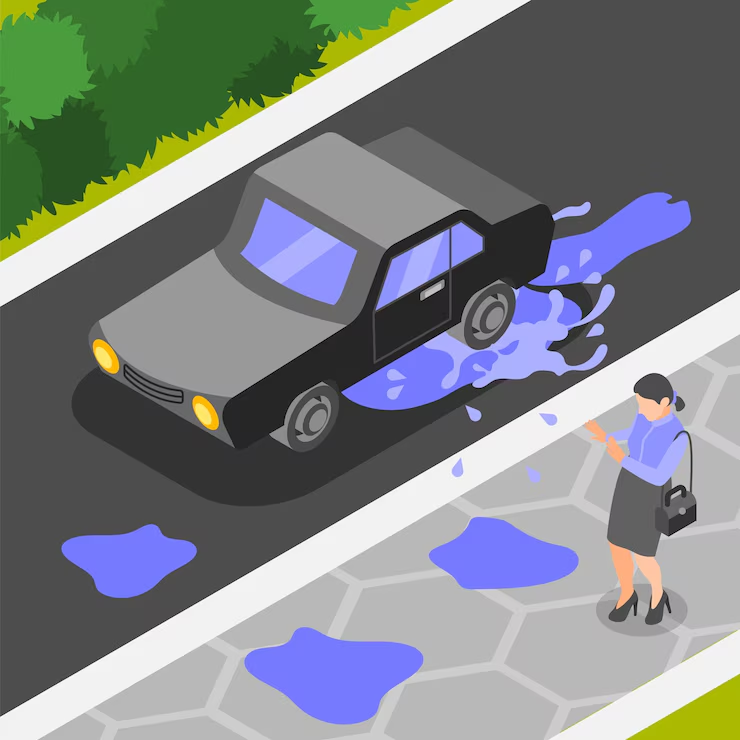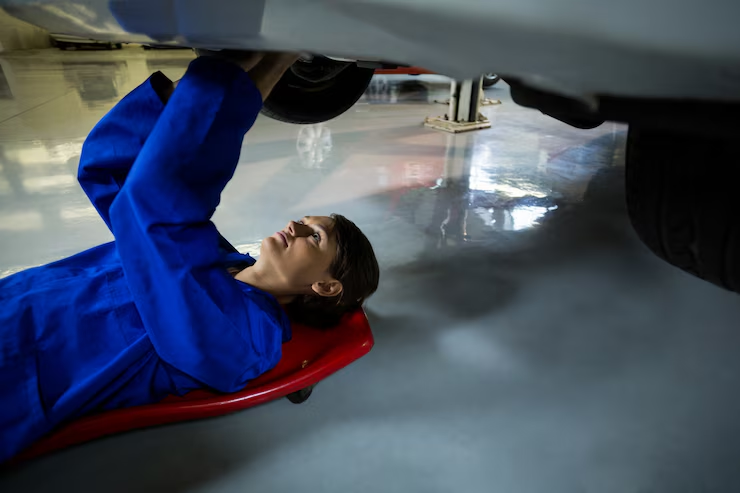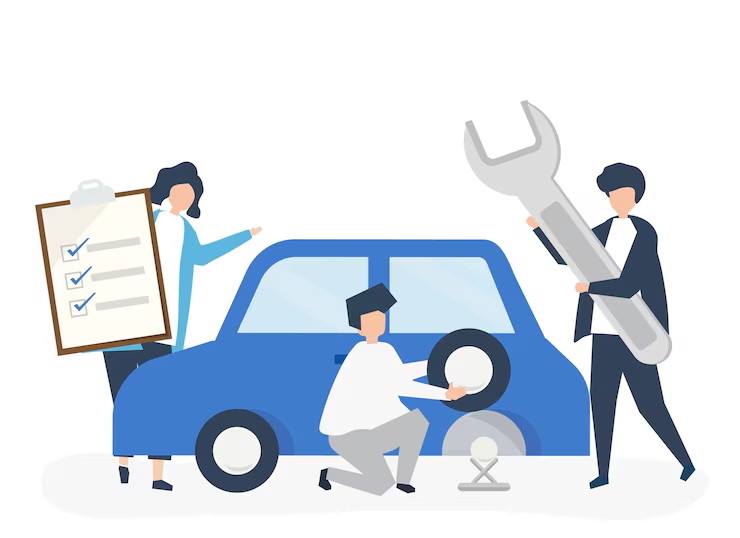
Why Is My Car Leaking Water?
A car leaking water can be concerning for any driver. Common reasons for this issue include a faulty air conditioning system, a damaged radiator, or condensation from the exhaust system. Identifying the source is crucial for effective repairs.
It’s essential to monitor where the water is pooling. If the leak is from the air conditioning unit, it may just be condensation, while a coolant leak could indicate more serious mechanical problems. Understanding these distinctions can help in managing vehicle maintenance more effectively.
Drivers should pay attention to the color and origin of the fluid. Clear or slightly tinted water typically suggests harmless condensation, but a colored or oily fluid may point to significant issues that need immediate attention. Being aware of these signs can save time and potential repair costs.
Diagnosing Water Leakage

Identifying the source of water leakage in a car requires careful assessment and knowledge of common issues. By understanding potential causes and conducting thorough inspections, the problem can often be resolved efficiently.
Common Causes
Water leakage can stem from various sources. Common culprits include:
- Windshield Seals: Deteriorating or improperly installed seals can allow rainwater into the vehicle.
- Door Seals: Worn or damaged rubber seals around doors may lead to water ingress.
- Sunroof: Clogged drainage tubes from the sunroof can cause overflow.
- Coolant Leakage: A leaking radiator or cooling system can result in fluid accumulation.
Recognizing these issues early can prevent more extensive damage and costly repairs.
Assessment and Inspection
To diagnose the leak, a systematic inspection is essential. This typically involves:
- Visual Examination: Inspect all seals and joints for signs of wear or damage.
- Water Test: Conduct a water test by running water over the car, focusing on seals and joints.
- Check Fluid Levels: Monitor coolant or water levels to determine if the source is internal or external.
The entire inspection process may take between 30 minutes to two hours, depending on the leak’s complexity and the car’s model.
When to Seek Professional Help
If basic assessments do not reveal the leak’s source, or if the problem persists after repairs, it’s time to consult a professional. Signs that warrant expert attention include:
- Persistent Water Accumulation: If water continues to gather despite evident repairs.
- Electrical Issues: Water exposure might affect the car’s electrical systems, signaling a more serious problem.
- Structural Damage: Noticing rust or mold growth can indicate prolonged leakage.
A professional can provide a thorough diagnosis and advice on necessary repairs, ensuring the vehicle’s safety and longevity.
Functional Implications of Water Leaks
Water leaks in a vehicle can significantly affect its operation and lead to long-term damage. Identifying these issues early can help mitigate their impact on performance and safety.
Effect on Vehicle Operation
When a car leaks water, it can disrupt several essential systems. For instance, water intrusion into the engine compartment may lead to electrical component failure. This can result in problems like flickering lights or malfunctioning sensors.
Additionally, if water leaks into the interior, it can cause problems with heating and cooling systems. A common complaint is the heat blowing cold air, indicating that coolant levels may be affected. Ignoring such leaks can lead to performance issues, making the vehicle less reliable.
Long-Term Damage Risks
Persistent water leaks can cause severe damage over time. Rust and corrosion can develop on metal components, weakening structural integrity. Components like the brake system, fuel lines, and electrical wiring are at risk.
In some cases, water damage may lead to mold growth in the interior, posing health risks for passengers. If the problem is severe enough, it could make the vehicle unsafe to operate. If a car is totaled but still drivable, repairing water damage may outweigh the vehicle’s value, making it an unwise investment.
Preventive Maintenance

Proper preventive maintenance can help avoid water leaks in vehicles. Regular checks ensure that the car remains in optimal condition and helps to identify potential problems before they escalate.
Routine Inspections
Regular inspections are essential for keeping a vehicle in top shape. Owners should inspect areas prone to wear and tear, such as gaskets, seals, and hoses. A monthly check is advisable, focusing on the engine compartment and undercarriage.
Inspecting the interior for signs of water damage can also be beneficial. Look for damp carpeting or mold. During routine inspections, it’s wise to examine the windshield and window seals. Replacing worn seals can prevent leaks effectively.
Additionally, washing the car every couple of weeks helps maintain paint and seal integrity. Keep an eye on the condition of the undercarriage, especially after driving in wet conditions.
Weatherproofing Techniques
Implementing weatherproofing techniques can significantly reduce water leak risks. Applying water-repellent treatments on the windshield and windows can help repel rainwater.
Maintain door seals and window gaskets by applying rubber conditioners to keep them flexible. This practice prevents cracking and ensures proper sealing.
Additionally, consider using a car cover during prolonged storage to protect against heavy rain or snow. Regularly cleaning and inspecting drainage holes in the car’s body helps direct water away from critical areas.
Furthermore, ensure that the sunroof drains are clear. Blocked drains can lead to interior leaks. Lastly, proper maintenance of the vehicle’s body and paintwork preserves the protective barriers against moisture.
Troubleshooting Other Car Odors and Residues

Identifying and eliminating unwanted odors and residues in a car can enhance the driving experience. Proper techniques can address common issues effectively.
Eliminating Unpleasant Smells
If a car smells like gas, it may indicate a fuel leak or evaporative emissions issue. Checking the fuel lines and connections is essential. If the smell is from cigarettes, using an odor eliminator spray specifically designed for fabrics can help. Leaving an open container of activated charcoal inside can absorb lingering odors. For persistent smells like weed or food, steam cleaning the upholstery may be necessary.
Removing Sticky Substances
Sticky residues from sap or food can be troublesome. To remove sap effectively, using rubbing alcohol or a dedicated adhesive remover is recommended. Apply it to a soft cloth and gently rub the affected area. For food spills, a mixture of warm water and dish soap can clean the area without damaging surfaces. For gum, ice can harden it, making it easier to scrape off without residue.
Addressing Water Spots
Water spots on a car typically occur after rain or washing. They can also be caused by hard water. To remove them, a dedicated car wash soap combined with a microfiber cloth is effective. For stubborn spots, a vinegar solution (equal parts water and vinegar) can break down mineral deposits. It’s crucial to rinse thoroughly after applying any cleaning solutions to prevent further staining. Using a wax or sealant can protect the surface from future water spots.
Enhancing Car Aesthetics
Improving a car’s aesthetics often involves focusing on its paint and body work, along with maintaining clean and appealing windows. These factors significantly impact the overall appearance of the vehicle.
Paint and Body Work
A well-maintained paint job can dramatically elevate a car’s appearance. Repainting a vehicle typically requires about 1 to 2 gallons of automotive paint, depending on the size of the car. This investment can range from $300 to $1,500, depending on the quality of the materials and labor costs.
For minor imperfections, touch-up paint can be a cost-effective solution. When it comes to removing unwanted paint, using a clay bar or rubbing compound can help restore the surface. It’s crucial to avoid harsh chemicals that could damage the clear coat.
To maintain the paint’s condition, regular washing and waxing are essential. This not only protects the paint but also enhances the overall shine.
Window Treatments and Cleanliness
Tinting car windows can improve both the aesthetics and functionality of a vehicle. The cost of window tinting ranges from $100 to $400, depending on the type of tint selected. Darker tints provide better UV protection and heat reduction.
For clarity, maintaining clean windows is vital. It is safe to use Windex or similar products for standard cleaning, but care should be taken to avoid ammonia-based cleaners on tinted windows.
Interior windshield cleaning often requires a different approach; using a microfiber cloth can prevent streaks and enhance visibility. Regular maintenance will ensure that windows remain free of smudges, contributing to the overall aesthetic appeal of the car.
Ownership Concerns

Ownership of a vehicle involves various considerations that can impact the buying experience and long-term satisfaction. Understanding critical questions related to purchasing and licensing can help potential owners navigate the process effectively.
Vehicle Purchasing Questions
When purchasing a car, several important questions arise. For instance, potential buyers often wonder how many miles is good for a used car. Generally, a vehicle with under 120,000 miles is considered good, although factors such as age and maintenance history also matter.
Can you lease a car with bad credit? Leases may be challenging for individuals with poor credit, but some dealerships offer programs aimed at those in this situation. Additionally, it’s crucial to confirm if car dealerships are open on Sundays, as their hours can affect shopping schedules.
Licensing and Legal Considerations
Before purchasing a vehicle, one must know if a license is needed to buy a car. In most states, a driver’s license is not required for the purchase itself. However, registration and operation of the vehicle will necessitate one.
Legal issues may also arise concerning vehicle searches. For example, questions about can a cop search your car without a warrant are crucial. Generally, police need probable cause to search a vehicle, but exceptions exist. Understanding these nuances can help owners navigate potential legal encounters effectively.
Miscellaneous Factors
Various aspects can influence a vehicle’s water leakage, from specific car features to external influences. Understanding these factors can assist in diagnosing and resolving the issue effectively.
Car Specifications and Maintenance
Different car models have unique designs that can affect leak sources. For instance, certain vehicles are more prone to water leakage due to their aging rubber seals or compromised window seals. Regular maintenance is crucial in preventing water leaks.
Key points to consider:
- Aging Components: Rubber parts like hoses, gaskets, and door seals wear out over time. Inspecting these regularly can prevent leaks.
- Coolant Systems: A malfunctioning radiator can leak coolant, which may appear similar to water leaks.
- Drains and Channels: Vehicles often have drainage systems that can become clogged. Clear blockages to maintain proper water flow.
Maintaining these systems is essential for vehicle longevity and performance.
External Incidentals
Environmental factors also play a significant role in water leakage. For example, heavy rain or snow can lead to temporary pooling of water in certain areas of a car.
Consider these external factors:
- Parking Location: Parking under trees or near buildings can result in debris accumulation that obstructs drainage.
- Accidental Damage: Accidents or minor impacts can alter the shape of a car’s body, causing gaps for water penetration.
- Weather Conditions: Extreme weather changes can cause materials to contract and expand, potentially leading to leaks.
Being aware of these external factors can help prevent water-related issues in a vehicle.



